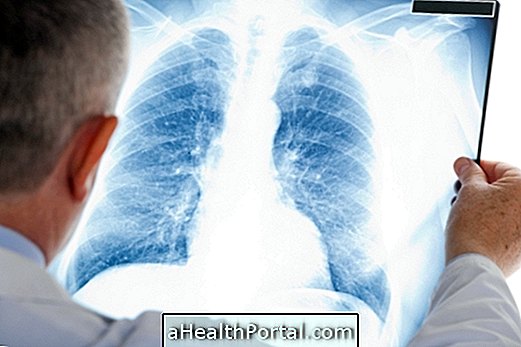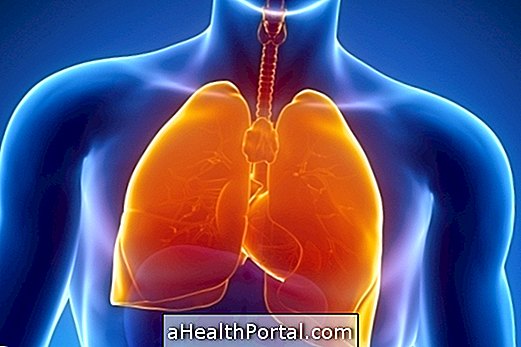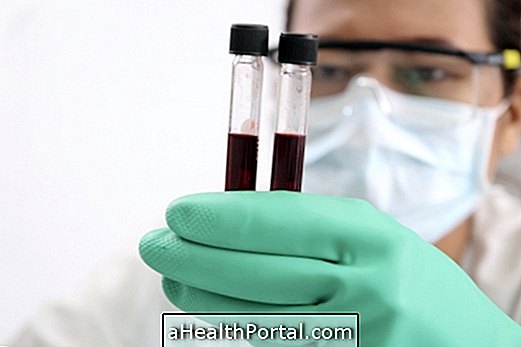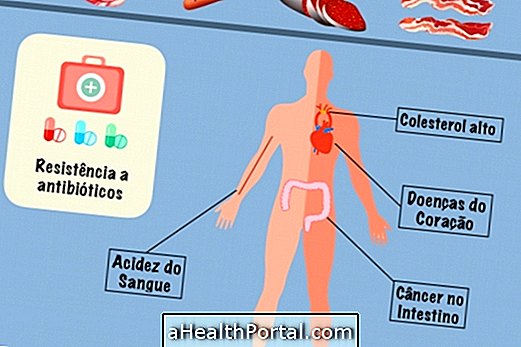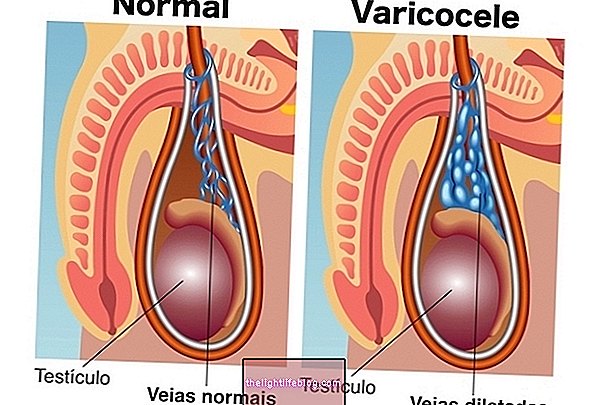Pulmonary abscess is a cavity that contains pus in its interior, caused by a necrosis of the lung tissue due to a microbial infection.
Generally, the abscess forms between 1 to 2 weeks after contamination by the microorganism, which most often happens due to a complication of a pneumonia caused aspiration of the contents of the mouth or stomach, as they contain bacteria more likely to develop this type of injury. Understand how aspiration pneumonia arises.
The diagnosis is made by the physician through clinical evaluation, pulmonary radiography and blood tests. It is then essential to start treatment with antibiotics that help fight the causative microorganisms in combination with nutritional support and physical therapy. In more severe cases, pulmonary drainage may be necessary.
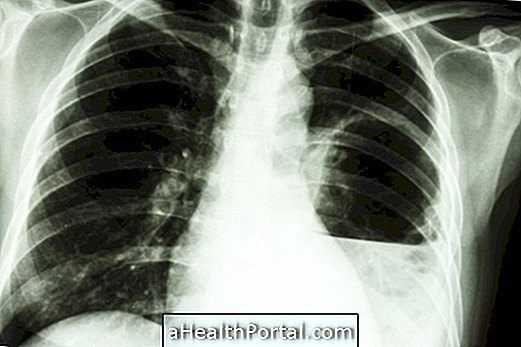
How to identify
The main symptoms of pulmonary abscess include:
- High fever;
- Shortness of breath and tiredness;
- Cough with mucopurulent secretion, which may contain an unpleasant odor and blood splitting;
- Pain in the chest that worsens with breathing;
- Loss of appetite;
- Night sweats and chills.
Worsening of the clinical picture may take days to weeks, depending on the bacteria that caused the infection, the health conditions and defenses of the body of the affected person. Generally, only one abscess is formed, which measures more than 2 cm in diameter, however, in some cases multiple abscesses may appear during infection.
When signs and symptoms appear that may indicate this type of lung infection, it is necessary to consult the pulmonologist as soon as possible or go to the emergency room, so that the cause is identified and the appropriate treatment is started soon.
How to confirm
The diagnosis of pulmonary abscess is made by the physician, through the analysis of symptoms, physical examination, as well as examinations such as chest radiography, which demonstrates the presence of secretory infiltrates in the lung and the area of cavitation, usually rounded, filled with pus and air.
Blood tests, such as a blood count, can help to demonstrate the presence of an infection and evaluate the severity. Computed tomography of the chest may help to better define the location of the abscess and to observe other complications such as a lung infarction or accumulation of pus in the pleural fluid.
Identification of the microorganism may be necessary in some cases, especially to guide treatment, and for this a culture of the pulmonary sputum may be performed, or the collection of material from the tracheal aspirate or thoracentesis infection, for example, or even by a blood culture . See how the test is done to identify the best antibiotic to treat the infection.

What Causes Pulmonary Abscess
Pulmonary abscess is caused when microorganisms, usually bacteria, settle in the lung and cause tissue necrosis. The penetration of the microorganisms can happen through the following mechanisms:
- Aspiration of infectious material (most common cause): most common in cases of alcoholism, drug use, coma or anesthesia, where loss of consciousness facilitates aspiration of contents from the mouth or stomach, as well as cases of sinusitis, gums, dental cavities or even when you can not have an effective cough;
- Pulmonary infection;
- Cancer;
- Direct traumatic penetrations into the lungs;
- Dissemination of infections of a neighboring organ;
- Pulmonary embolism or infarction.
When pulmonary abscess arises from direct lung infection, it is characterized as primary . Already in cases that arise due to complications of pulmonary alterations, such as the spread of an infection of other organs or a pulmonary embolism, it is called secondary .
Some of the most frequent microorganisms as cause of pulmonary abscess are Staphylococcus aureus, Klebsiella pneumoniae, Pseudomonas aeruginosa or Streptococcus pyogenes, or anaerobic bacteria such as Peptostreptococcus, Prevotella or Bacteroides sp, for example. Abscesses by fungi or mycobacteria are rarer and appear more often in people with very weakened immunity.
How is the treatment done?
Treatment for pulmonary abscess is done using antibiotics such as Clindamycin, Moxifloxacin or Ampicillin / Sulbactam, for example, for an average of 4 to 6 weeks, depending on the causative organism and the patient's clinical conditions.
During the acute phase nutritional support and respiratory physiotherapy are also indicated. If the initial treatment is not effective, surgery should be performed to drain the abscess, and in the latter case remove the part of the necrotic lung.
Physiotherapy for pulmonary abscess
Physical therapy is important to aid recovery, and is done through:
- Postural Drainage: after locating the pulmonary abscess, the individual is positioned towards the source bronchus for subsequent elimination of the secretions through the cough;
- Respiratory kinesiotherapy: respiratory exercises are aimed at increasing the expandability of the chest and normalizing lung volumes;
- Spirometry of encouragement: the person is instructed to inhale deeply (pull the air into the lungs) and hold it for a few seconds. It can be done through devices like Respiron;
- Aspiration of secretions if the person can not cough.
Physiotherapy for pulmonary abscess is more effective in collaborative people who respond to requests for coughing and breathing exercises. Learn more about how it is done and what respiratory physiotherapy is for.

